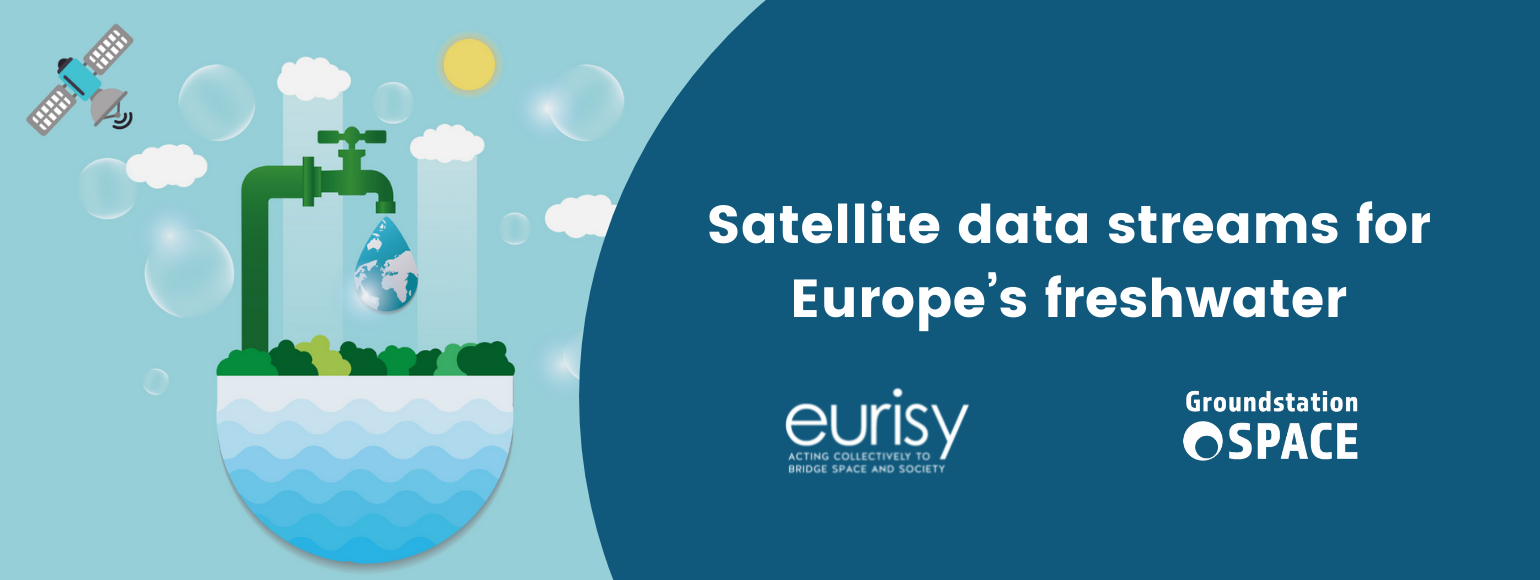Satellite data streams for Europe’s freshwater

Water is a precondition for human, animal and plant life as well as an indispensable resource for the economy. At the same time, economic activities, population growth and urbanisation are just some among the factors threatening the availability of freshwater throughout Europe. Climate change results in increasingly frequent water scarcity and drought. Protection of water resources, of fresh and salt water ecosystems and of the water we drink and bathe in, is therefore one of the cornerstones of Europe’s environmental policy. The EU aims to address water pollution and enhance preparedness among its member states to water-related climate change impacts. Space assets can make a significant contribution herein. During the webinar on Space for Water Resources, several examples of satellite data for water services were presented.
The Eurisy database of success stories on operational satellite services provides a good starting point to understand how space can be of value for the water sector. The use cases range from monitoring water quality in ecosystems and irrigation management in agriculture, to supporting water infrastructure, coastal zones and flooded areas.
For more applications specifically of Copernicus data, the EU funded project of Water – ForCE (Water scenarios for Copernicus Exploitation) makes another great example.
Ilias Pechlivanidis of the Swedish Meteorological and Hydrological Institute presented the e-shape pilot “Improved historical water availability & quality information service”, a large-scale Earth observation driven water service addressing local user and market needs. “Users are interested to put trust in a specific service, and we are trying to ensure their trust and engagement by continuously communicating model performance for different variables (e.g. snow information or soil moisture). We can tell the users for specific regions if these variables are having good performance, and whether they can trust the data or not.” One example is the case of the Swedish hydropower industry. The users are interested in snow information and can consult satellite data on fractional snow cover, snow water equivalent. Through the assimilation of space borne observations, seasonal forecasting services have also been improved. Services such as these allow hydropower users to better manage water reservoirs resulting in significant economic gains.
As head of the spatial mapping and land planning department at the Royal Centre for Remote Sensing in Morocco (CRTS), Ahmed Erraji presented three areas of activities of the centre related to water management. First, to monitor irrigated areas CRTS relies on various types of approaches and sensors, including satellite data such as from the Moroccan satellite Mohammed 6 A and B. The centre delivers reference maps and GIS databases contributing to water management activities of water users associations. Another area of activity includes remote sensing and modeling for land information monitoring different parameters such as soil moisture, water availability at root zone, and water balance. Finally, CRTS also provides satellite-based services to monitor water related hazards such as floods and droughts. Optical and radar remote sensing data can help authorities to predict, monitor and manage such crises.
Martinus van den Berg represented Antea Group where he works as a general statistician working on data driven solutions in the water sector. As a consultancy firm, one of its recent tasks in the water sector is to develop an updated soil map with improved drainage classes. The objective is to classify the behaviour of groundwater levels in the soil. Mapping these drainage capacities is useful for permitting, modelling, and water management. However, the original map dates from 1970. Modern methods including satellite data help to achieve better accuracy. While temporal and spatial resolution are still limited for remotely sensed soil water index as provided by Copernicus, models and space data assimilation help to glue sparse datasets together to form high coverage and coherent datasets.
Funding & Innovation Opportunities
Within the new Horizon Europe programme, several clusters can be identified with relevant calls related to water resources. Although some of these do not explicitly mention space opportunities, there are quite a number of areas (e.g. environmental protection, water infrastructure, deep sea exploitation, inland waterways, freshwater ecosystem restoration, etc.) which could potentially involve space assets.
One-minute pitch
Vanessa Da Silva, Customer Relations Manager at Hydrosat, closed the webinar with a one-minute pitch about irrigation management. In order to optimise the use of water, the company utilises thermal satellite imagery deriving knowledge in areas such as agriculture, climate change, and disaster management.
Stay tuned!
Our next session, Space for Smart Cities, will take place on 2 June 2021! You can already register here.
In the meantime, join us on the Open Campus networking platform where you will find more information about the previous sessions, including the presentations and recordings.
Tell us more about your space-related innovation! Send us your success story or register for a one minute pitch at the next session.


